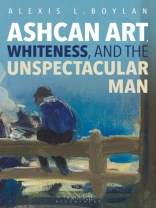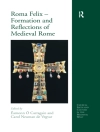Arriving in New York City in the first decade of the twentieth century, six painters-Robert Henri, John Sloan, Everett Shinn, Glackens, George Luks, and George Bellows, subsequently known as the Ashcan Circle-faced a visual culture that depicted the urban man as a diseased body under assault. Ashcan artists countered this narrative, manipulating the bodies of construction workers, tramps, entertainers, and office workers to stand in visual opposition to popular, political, and commercial cultures. They did so by repeatedly positioning white male bodies as having no cleverness, no moral authority, no style, and no particular charisma, crafting with consistency an unspectacular man. This was an attempt, both radical and deeply insidious, to make the white male body stand outside visual systems of knowledge, to resist the disciplining powers of commercial capitalism, and to simply be with no justification or rationale. Ashcan Art, Whiteness, and the Unspectacular Man maps how Ashcan artists reconfigured urban masculinity for national audiences and reimagined the possibility and privilege of the unremarkable white, male body thus shaping dialogues about modernity, gender, and race that shifted visual culture in the United States.
Boylan Alexis L. Boylan
Ashcan Art, Whiteness, and the Unspectacular Man [PDF ebook]
Ashcan Art, Whiteness, and the Unspectacular Man [PDF ebook]
Mua cuốn sách điện tử này và nhận thêm 1 cuốn MIỄN PHÍ!
Ngôn ngữ Anh ● định dạng PDF ● Trang 280 ● ISBN 9781501325779 ● Nhà xuất bản Bloomsbury Publishing (USA) ● Được phát hành 2017 ● Có thể tải xuống 3 lần ● Tiền tệ EUR ● TÔI 5365144 ● Sao chép bảo vệ Adobe DRM
Yêu cầu trình đọc ebook có khả năng DRM












